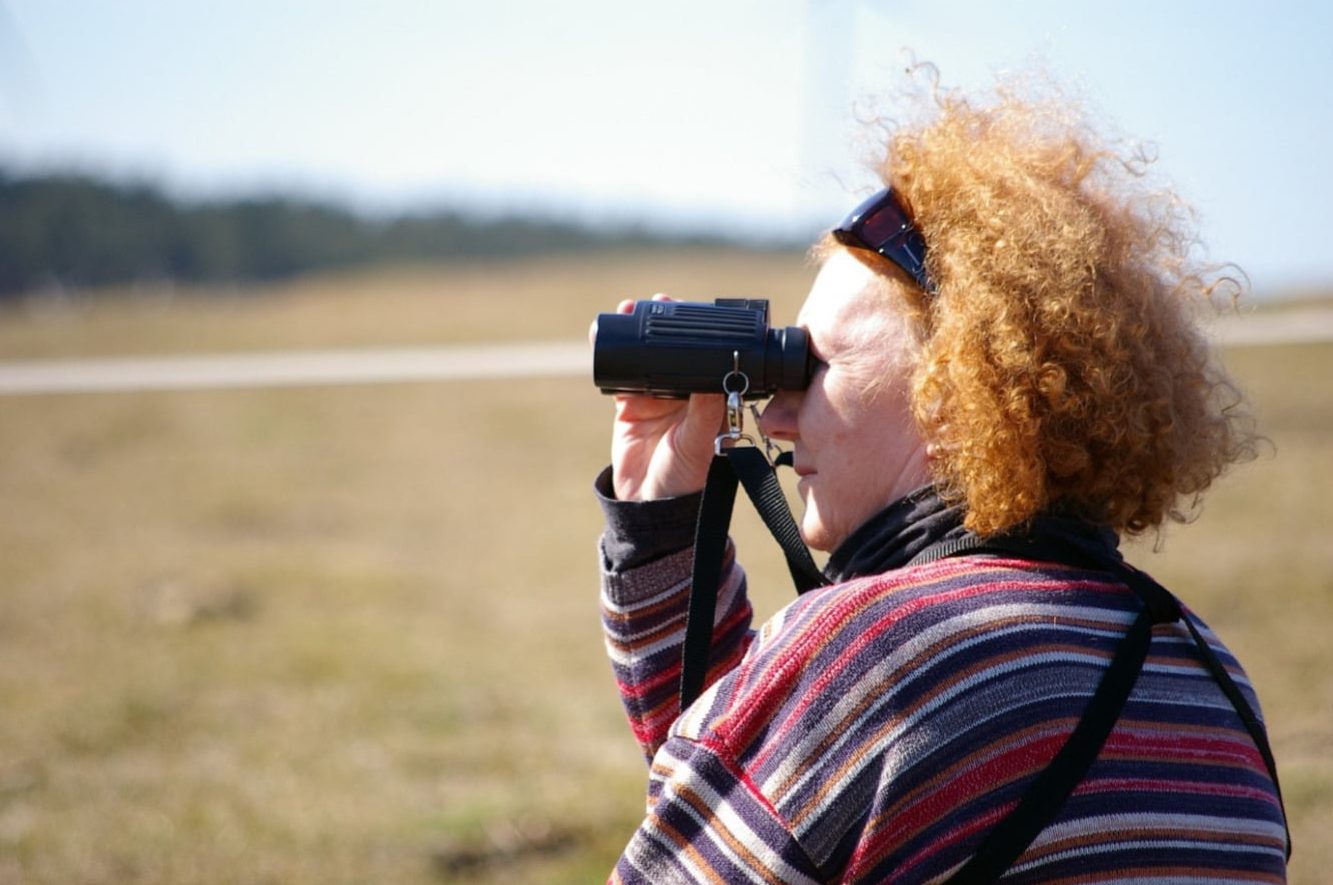Wondering what binoculars are used for? Binoculars have a wide variety of uses, and can come in handy in many different situations. Below we discuss the 6 main uses of binoculars. But first, let’s discuss what makes binoculars so great to begin with.
What Are Binoculars Used For – Introduction
When you get down to the bare bones of binoculars, they’re essentially two miniature telescopes lashed together side-by-side that focus in tandem. In other words, anything you can use a telescope for, binoculars can accomplish in a much more portable, less unwieldy way.
Binoculars have the ability to bring you up close and personal with all of your favorite things and activities. Basically, any time you find yourself thinking “I wish I was closer” or “I wish I could see better” you could solve your problems simply by packing a set of binoculars to take with you. We usually associate them with park rangers or bird watchers — and of course binoculars are perfect for their needs! — but a good pair of binoculars can be so much more than most people realize and can improve so many other activities and adventures.
I don’t think anyone has ever said it better than David Bushnell in his original company slogan for Bushnell Optics: “The world is beautiful. See it up close.”
Note: The best value binoculars for beginners who need a solid, inexpensive pair, are the Vortex Optics Diamondbacks.
Here are the most common uses of binoculars:
Nature Viewing
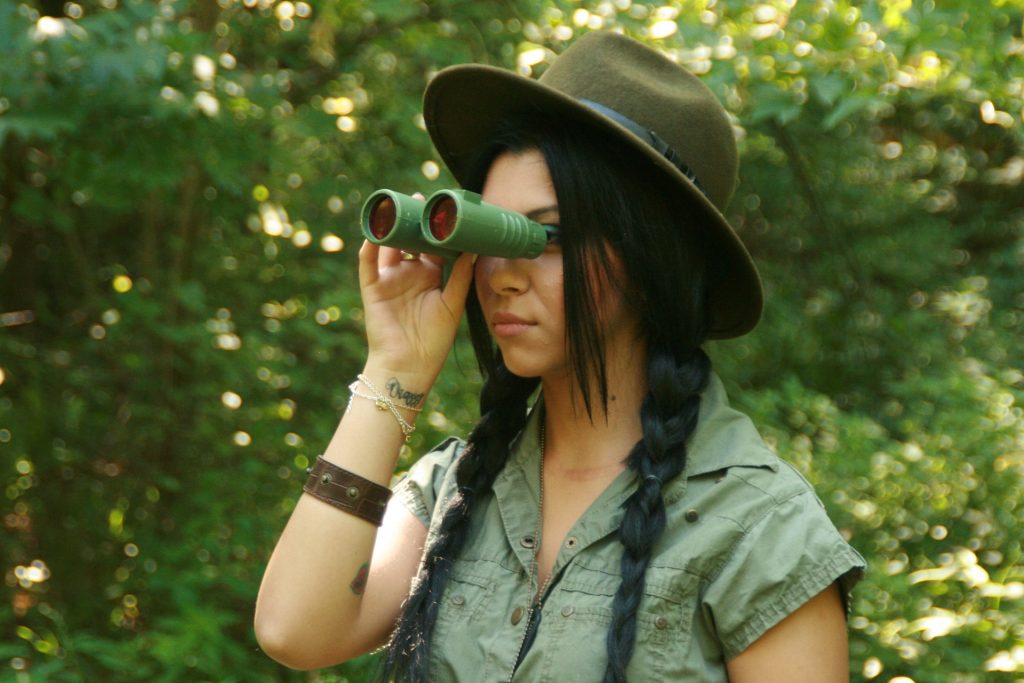
We’ve written a lot about nature viewing with the aid of binoculars on this site, and, as I mentioned above, it’s the most commonly known binocular-related activity. We even have a few articles up that can advise you on the best binoculars for this purpose in any price range. Bird-watching, leaf-peeping, and big game safaris are just a few of the many nature viewing situations that binoculars make more enjoyable.
Most binoculars appropriate for nature viewing have a magnification of 8x or 10x, and at least a 40mm lens, placing them squarely in the full-size range. The combination makes it easy for the user to see flora or fauna thousands of yards away from your naked eye, while still enjoying a fairly wide field of view, which is good when searching for fauna that are well-camouflaged.
Using a pair of binoculars on nature hikes and guided tours lets you experience nature close-up and zoomed in. A quality pair lets you see the beak on a hummingbird vibrating in time with its wings. You can use them to spot a sloth hiding in the canopy of a jungle. Or you can see the veins in a leaf just beginning to turn red on its branch. In other words, you can experience so much more of the nature you love just by investing in a pair of binoculars.
Read our article “Best Binoculars for Viewing Wildlife” for tips on the best binoculars to buy for this use.
Opera & Theater
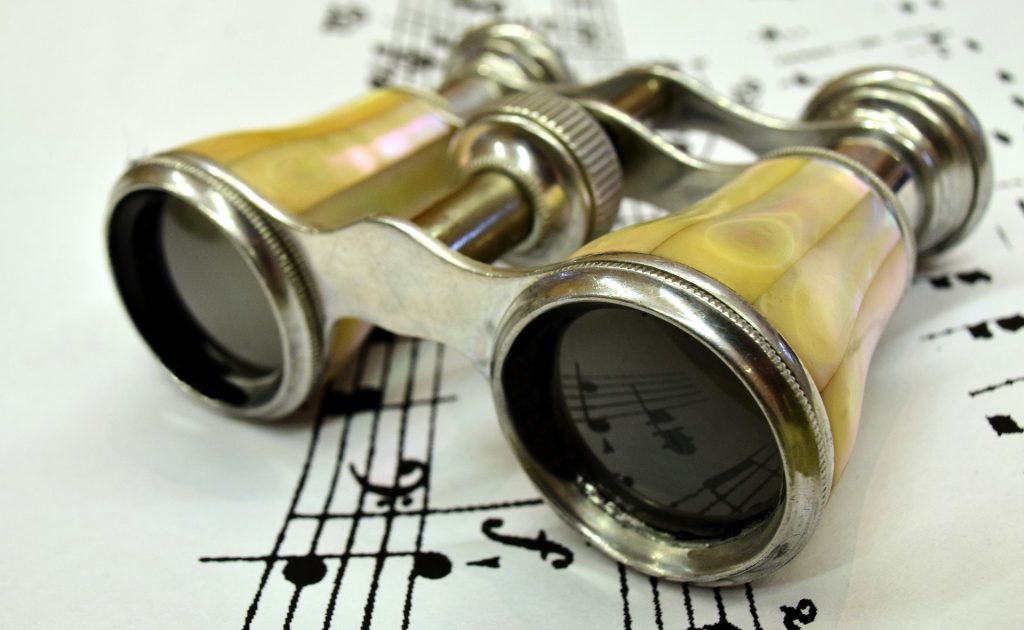
You’ve probably seen the old images of women in long white gloves pointing a pair of binoculars from their box seats to the action on the stage. Binoculars at the opera and theater are so common, in fact, that we refer to the compact pairs as “opera glasses.” Because they are an accessory for the formal attire worn to the opera or ballet, these binoculars are luxuriously decorated with gold tones — or even encrusted in jewels! — focusing more on aesthetics than high-performance.
Binoculars intended for use at the opera or theater are usually very compact in size and a much lower magnification than you would use for, let’s say, bird-watching, hovering around 3x or 5x (in comparison to the 8x and 10x we just discussed above). The magnification is strong enough for an indoor setting, and even balcony seats at the upper back of a theater are rarely farther than a few hundred yards from the stage. Still, a pair of opera glasses enables you to read the emotions on the actor and actresses’ expressions with more clarity. And most opera glasses focus on maintaining a wide field of view, so that the user is able to keep the entire stage in focus when looking through the eyepieces.
They usually come equipped with a wrist or neck strap, but they can also come in a lorgnette style, where the binoculars are mounted on a handle so that you can hold them upright with one hand.
Read our article “Best Opera Glasses” for tips on which opera glasses/binoculars to buy.
Sporting Events
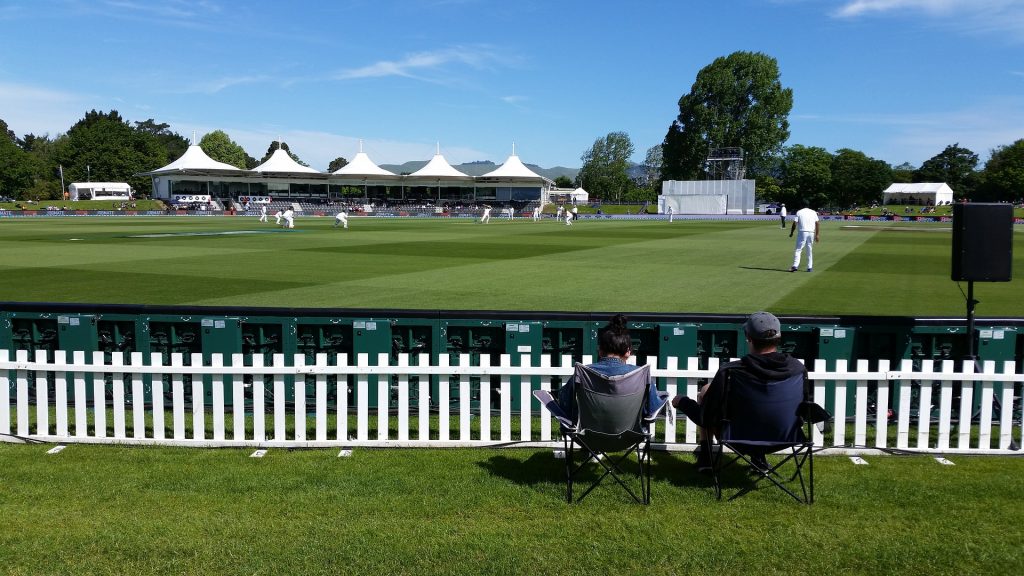
Binoculars are very useful when watching a sporting event. Often, you’re in a nosebleed seat or situated at one end of the playing field, and seeing some of the action is harder. With a pair of binoculars, all of the action feels like it’s right at your fingertips. However, due to the way they can limit the field of view, the style of the sport you’re planning to watch should be considered before purchasing any set of binoculars.
For example, a binocular with a high-magnification but a narrow field of view isn’t well-suited for watching team sports such as football or soccer where a lot of the action could be a dozen yards away from the ball. You would find yourself constantly scanning the field with the binoculars, trying to make sense of the action or struggling to follow the ball passes. On the other hand, those same binoculars (with a narrower field and higher magnification) would be perfect for solo competition sporting events, like gymnastics or figure skating, where you’re following one or two people who are moving across an open space.
Despite all of those considerations, a magnification of 8x usually performs very well at most sporting events; a higher magnification isn’t usually needed and can make it difficult to keep an image steady in your lenses. And, honestly, if budget is an issue, your nature viewing pairs can easily do double time for most sporting events.
Military

Did you know that night vision was invented for military uses by the Germans in World War II? Did you know that night vision was designed to be an upgraded feature in military-grade scopes? The technology has vastly improved since it first appeared in the mid-1930s, but the purpose remains relatively the same: to spot a target or danger in the dead of night. In other words, to keep our troops safe from harm.
Our military servicemen and women use binoculars everyday on both active and reconnaissance missions. Binoculars are used to survey the landscape before troops move forward, as scouts attempt to spot any lurking dangers. They’re used to judge distance to a target or to help build bridges by identifying the safest crossing point over a gorge or river.
Military-grade binoculars always employ the most cutting edge technology to provide our troops with the best optics, coatings, and most innovative features. But with a recent decrease in the cost of manufacturing high-end optics, you can get your own military-grade binoculars for a fairly inexpensive price tag.
Stargazing
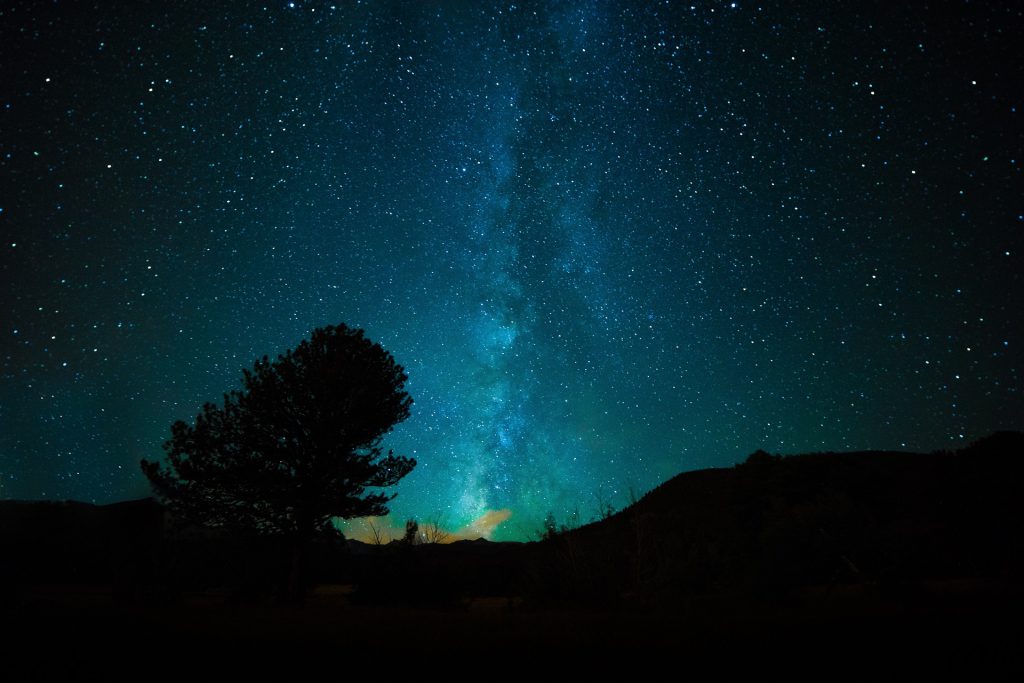
Binoculars really are like miniature portable telescopes that you can easily carry around with you, which of course makes them perfect for astronomy lovers.
Choosing the right pair of binoculars can be a bit tricky for stargazing, though, as not only do you need to factor in the usual variables we’ve already discussed (magnification and field of view), but also how well the binoculars can perform in low-light conditions. A pair of binoculars perfect for leaf-peeping might be completely blind without bright sunlight for the lens to filter. Or a pair without low dispersion glass in the lenses can cause chromatic fringing or aberrations in the image. Generally, the key for finding binoculars that perform well in low-light conditions is to look for pairs with extra-low dispersion (ED) glass in the lenses.
Magnification is also an important thing to consider. Most experts will tell you that a magnification less than 10x is absolutely useless for stargazing, and it’s more common to see binoculars with 12x or 15x magnification on the “Best Binoculars” roundups for space viewing. But reading reviews is paramount before buying binoculars for any activity, but especially low-light activities; some of the industry’s recent offerings have churned out excellent stargazing pairs at only 10x magnification due to the clarity of image their high-quality optics can provide.
Binoculars can’t replace a good, solid telescope for serious astronomers because binoculars can’t bring the farther reaches of space to your eye clearly. But a pair of good binoculars can work well in conjunction with more expensive and larger tools, and, for the more casual stargazers, a pair of good binoculars is the perfect solution for star lovers on a budget.
Hunting
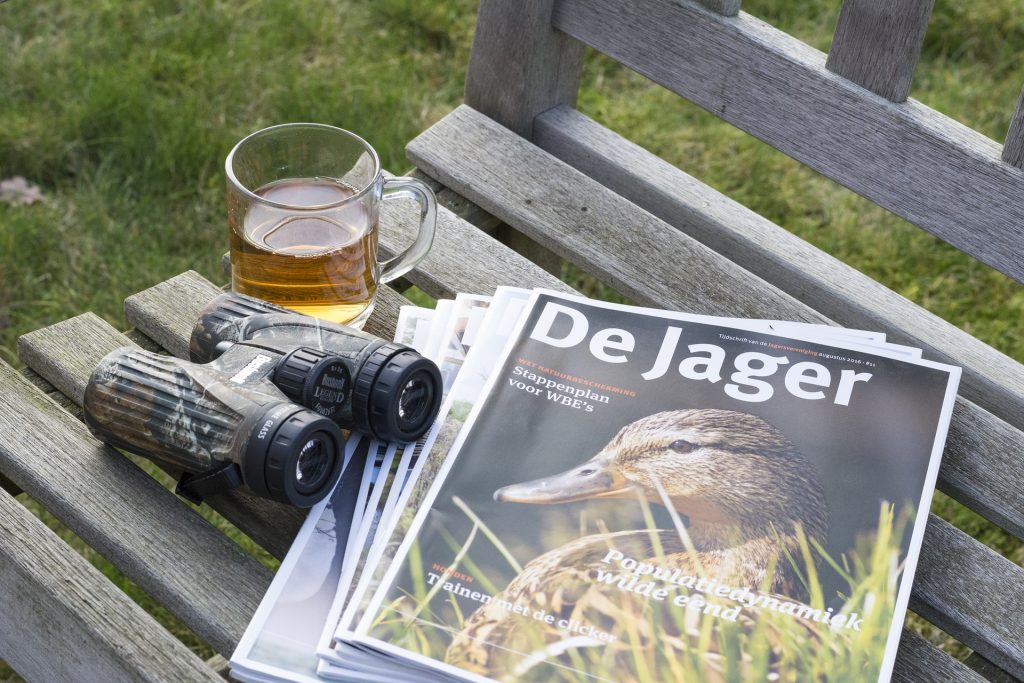
Hunting is one of the most popular sports in the US, but it’s also one way that many Americans feed their families. The slightest wrong movement will chase your prey away, so hunting binoculars are often focused on high-performance in all-weather tested casings.
Hunting binoculars and nature-viewing binoculars have a lot in common, of course. They’re both built for use in the great outdoors. They’re both designed to spot animals from a distance. But hunting binoculars can also include other impressive luxury features, such as night vision, that a bird-watcher or safari tourist may not have any use for.
Depending on the game they’re targeting, hunters might be looking high-performance at dusk, high-noon, or dead of night, so hunting binoculars often need to perform well in all light conditions. As mentioned above, higher magnifications make it harder for you to keep the image steady in your lenses, so hunters rarely want a pair of binoculars with a magnification higher than 10x. And field of view is so important that you’ll often see hunting binoculars with smaller lens sizes (30 or 32mm), placing them in the mid-range, rather than full-size specs.
Read our article “Best Binoculars for Elk Hunting” to find out more!
What Are Binoculars Used For – Conclusion
We hope this article has helped you gain clarity around what binoculars are used for.
As you can see, they’re definitely a worthwhile investment for many different adventures!
If you found this article helpful, don’t forget to share it with friends and family!

About The Author:
Hi! I’m Will Scott, the author of this post. I’m an outdoor enthusiast with over 10 years experience. I love trying out new gear and reviewing it so that other adventurers can get the most out of their experiences. I hope you’ve found my website informative, educational and helpful.

